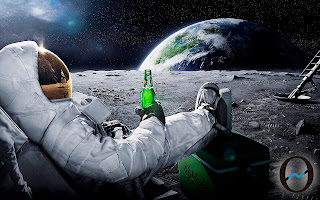BREAKTHROUGHS IN SPACE TOURISM
“Space travel is life-enhancing and anything that’s life-enhancing is worth doing. It makes you want to live forever“. – Ray Bradbury, a science Fiction Author
Space is quickly becoming the new destination for the wealthy, a market that analysts say could be worth billions in the years to come. After years of delays and daunting setbacks, several companies are in various stages of signing up passengers, completing their test programs and even training what will become a new generation of astronauts. Space tourism is another niche segment of the aviation industry that seeks to give tourists the ability to become astronauts and experience space travel for recreational, leisure, or business purpose. Upon his return to Earth from the International Space Station (ISS) on May 9, 2001, California millionaire, Dennis Tito speaks at a press conference about his experience as the world’s first space tourist. The tycoon reportedly paid the Russian Space Program $20 million for the trip into outer space.

DEVELOPMENT OF SPACE TOURISM
Space tourism is human space travel for recreational purposes. There are several different types of space tourism, including orbital, suborbital, and lunar space tourism. To date, orbital space tourism has been performed only by Roscosmos. Work also continues toward developing Suborbital space tourism vehicles.
The Virgin Galactic VSS (Virgin Space Ship) unity is the most recent civilian spacecraft to push the envelope. Several final suborbital test flights are happening in late 2021 before the company gets clearance to take commercial passengers. Company founder Richard Branson, three Virgin Galactic senior leaders, and two pilots flew to the edge of outer space on July 11, 2021. The VSS unity flew to what the United States considers the beginning of outer space at 80 kilometers. The successful trip means Virgin Galactic is one step closer to letting civilian flights depart in early 2022. So far the company reported 600 active reservations with each ticket selling between $200,000 and $250,000.
Jeff Bezos launched Blue Origin with multiple goals in mind. Firstly, to provide partial and totally reusable launch vehicles that are safe, low cost and meet the needs of civic, and commercial defense clients. Secondly to develop, explore, discover new energy and material sources, and relocate industries from the planet to space. The suborbital spaceflight New Shepard is a reusable suborbital rocket system designed for the internationally recognized boundary of space. Blue Origin, the rocket carried six passengers, and the voyage lasted for ten minutes on 20 July 2021, Blue origin has auctioned $28 million as the cost of the seat.
Space X has agreed to take Japanese entrepreneur and billionaire Yusaku Maezaw along with several artists on a trip around the moon. The target launch is 2023, will see how the timeline is adjusted as we get closer to launch. No one is sure if Space X will offer space tourism experiences like this in the future. However, their contract with NASA does allow them to carry space tourists to the ISS (International Space Station) by boarding Crew Dragon Capsules, So it’s possible that intrepid space tourists will one day use space rockets and capsules to reach space.
RESEARCH AND MARKET SPACE TOURISM
Space X designs manufacture and launch advanced rockets and spacecraft with the ultimate goal of making human a multi-planet species. Space X offers the most convenient options in space tourism services including the Moon trip and ISS Trip that humans around the moon or ISS for a few days. In addition, Space X also proposed an Earth trip for transporting humans anywhere on Earth within 30 minutes, which has great potential to disrupt the current aviation industry. Richard Branson’s Virgin Galactic: Spaceship Two is a reusable space plane that can fly into Suborbital space.

FUTURE OF SPACE TOURISM
Welcome to 21st-Century space, one that could potentially lead to 10 min space vacations, orbiting space hotels, and humans on Mars. Now, instead of warring superpowers battling for dominance in orbit, private companies are competing to make space travel easier and more affordable. This year Space X achieved a major milestone by launching humans to the International Space Station (ISS) from the United States but additional goal post on the star-studded horizon. The space travel industry has become increasingly important over the past decades. In fact, in our current state of the world, numerous jobs depend on this industry and the chance is that many jobs will be created in space exploration in the future. Space tourism will be a small sub-sector of the industry, but it will bolster the entire New Space industry. Once space tourism does become mainstream, it will also positively impact many social-economic factors on Earth: creating jobs, educating citizens about space, and fostering a new solar-based energy infrastructure. The sweet escape to the stars can eventually awaken us to the awe-inspiring potential of space exploration while also giving us a better appreciation of home.
CONCLUSION
The space industry is similar to past airline history. There are many potential passengers willing to venture into the sector or participate and the government should therefore consider this as an eminent opportunity to solve the current costly space access.
- If the corporation the private sector and the government is able to drive admission charges to a lower level with the aim of encouraging the rebirth of a new arena that encourages commerce and industry then there will be a great utilization of the space opportunities for growth. Space tourism is identified market niche that might catalyze the utilization of infrastructure in space especially due to future discoveries.

